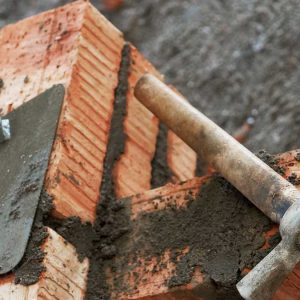Taking care of problems with masonry rehabilitation
Your building’s outer envelope is incredibly important. Every building is made with one chief concern in mind: how do we keep water out? Your masonry is the first line of defense. Every cracked brick or crumbling mortar joint means more chances that water will find its way through the outer envelope and wreak havoc inside.

Small problems can become big problems fast, which is why you need to stay on top of masonry rehabilitation.
Masonry problems
Over time your masonry will wear down naturally, especially around the mortar joints. Joints will naturally spall and flake away, creating gaps that will allow bricks or stones to loosen. Eventually, usually over the course of 10 years or so, walls will begin to bow out. That will continue until the veneer or the whole wall comes crashing down. This is a hazard for pedestrians in the area and necessitates a much more difficult repair job.
Maintenance is easier.
Finding and fixing issues
You can stay on top of your masonry by taking care of problems before they become a bigger issue. Looking for warning signs can help you know when to call in an expert to redo the masonry.
First, look at the depth of the mortar joint. If it’s significantly receded from the front of the brick, it may be time to come back and refinish. This process is called “tuckpointing”. Spalling, or cracking and flaking from the surface of the mortar, is another surefire sign of problems. Loose bricks or stone are an indicator of dire problems and if you see those you need to make an immediate call to someone who can help.
Regular inspections will help you take care of these issues before they become a bigger problem. Make sure you have a maintenance schedule in place that includes regular walkthroughs.
Masonry repair
You can do your repairs in house, but it’s far better to hire someone who knows what they’re doing, especially if the building is older. Tuckpointing isn’t that hard of itself, but there are some nuances that a skilled tradesman will know that can make the difference between a solid job and something that won’t do anything for the structural integrity of your building.
Grout repairs that are a different color than all the surrounding mortar will immediately advertise that you’ve been having problems with the masonry. A skilled mason will know how to mix mortar that matches the color of the surroundings.
Older buildings in particular need extra care. Masonry formulas may have changed since the building was built, and not everyone who can handle a trowel knows how to mix historically accurate mortar ratios.
An experienced mason will know exactly where to make repairs, how to make repairs, and what proportions are needed for any mortar gap. If you’re looking for help with your commercial building, call JK Industries and find out what makes us the best choice for your business.
